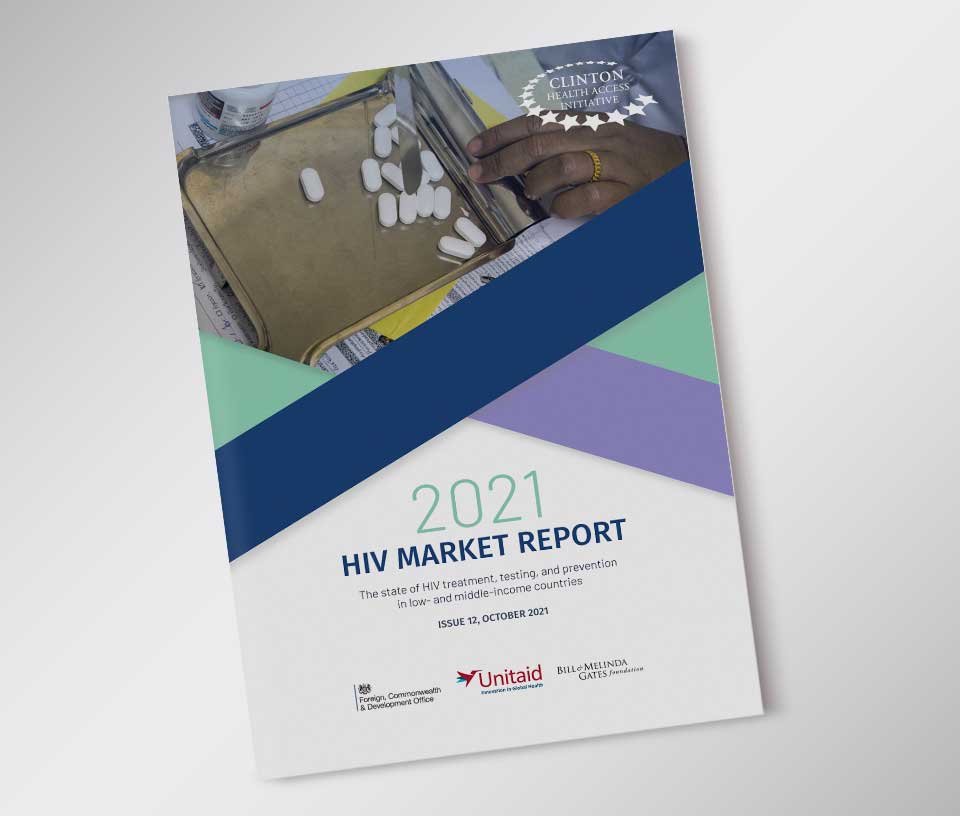CHAI is pleased to release the 12th issue of our annual HIV market report. This report provides a detailed look at the complex, ever-changing HIV commodity markets in low- and middle-income countries based on aggregated market intelligence from our work in over 30 countries.
In a year defined by COVID-19, the global HIV response fell short of UNAIDS goals, but demonstrated incredible resilience by adapting to service interruptions and continually expanding access to HIV treatment, prevention, and diagnostics.
This year also brought a new global strategy to address HIV—along with a new set of targets—to implement by 2025 in order to get back on track to end HIV as a public health threat by 2030. These goals are supported by new consolidated HIV guidelines debuted by the World Health Organization. The COVID-19 pandemic has added urgency to many of the recommendations in the guidelines, such as the
- Need to scale up HIV self-testing (HIVST),
- Importance of integrating psychosocial support into HIV care, and
- Benefits of multi-month dispensing for all patients, including children.
Significant treatment milestones were also achieved in 2021. Many countries have nearly completed their transition to optimal first-line treatment for adults, with over fifteen million people on tenofovir/lamivudine/dolutegravir (TLD). Recent approval and an innovative pricing deal for a generic co-formulation of darunavir and ritonavir will ensure people living with HIV have access to the best possible protease inhibitor. In a historic win for children living with HIV, a record-breaking regulatory approval and subsequent procurement of generic pediatric dolutegravir in over 25 countries will set the precedent for future pediatric drug development.
Countries also found ways to adapt their HIV diagnostic services during the pandemic, including increasing use of HIVST, which was complemented by HIVST pricing deals and new products on the market.
Advanced HIV disease care also continues to improve with new and upcoming commodities set to increase patient identification and simplify diagnosis and treatment of opportunistic infections. In the HIV prevention space, a robust and diverse product pipeline aims to curb the HIV epidemic by offering longer-acting products and increasingly diverse formulations that give users greater choice.
Moving forward, we are confident that increased access to diagnostics and the continued uptake of affordable, optimal products for both treatment and prevention of HIV will help achieve global HIV elimination in the next decade.






